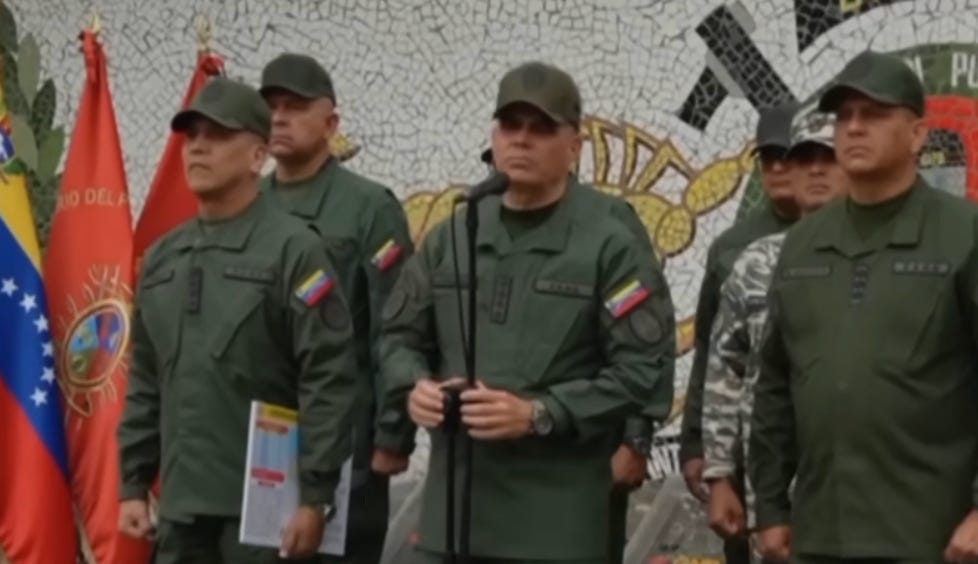Why Invading Venezuela Won't Be a Walk in the Park
Description
As American warships patrol Caribbean waters and F-35 fighters prowl Venezuelan airspace, hawkish voices in Washington paint an enticing picture: A swift military operation to topple Nicolás Maduro, similar to the easy interventions in Grenada (1983) and Panama (1989). It’s a dangerous fantasy that ignores three decades of failed Venezuelan policy and fundamentally misunderstands the catastrophic difference between those brief police actions and what a Venezuelan invasion would entail.
The comparison is essentially that of a neighborhood skirmish to a regional war. Venezuela is roughly 2,650 times larger than Grenada and 12 times larger than Panama, with 243 times more people than Grenada and 12 times more than Panama. The appropriate historical parallels aren’t Grenada or Panama—they’re Iraq and Afghanistan, multi-trillion-dollar quagmires that killed thousands of Americans and hundreds of thousands of civilians while advancing no genuine U.S. interests.
What regime change boosters consistently ignore is what happens the day after Maduro falls. They focus obsessively on knocking out Venezuela’s conventional military—no walk in the park, but an attainable feat—while studiously avoiding the nightmare that follows: A multi-factional civil war among heavily armed irregular forces, refugee flows dwarfing the current crisis, and a protracted insurgency that could justify further U.S. intervention and spiral into a broader conflict that could attract irregular leftist forces from across the region.
As far as historical analogues are concerned, Grenada was a tiny 344-square-kilometer volcanic island—smaller than many American cities. Despite hilly terrain, the entire country could be secured quickly because of its minuscule size. Panama at 75,420 square kilometers was larger but still a narrow isthmus focused around the Canal Zone, where U.S. forces already had extensive military presence and insider knowledge based on decades of American influence in Panama.
Venezuela covers 912,050 square kilometers—featuring the Andes mountains in the west, vast central plains (llanos), dense Amazon jungle in the south, and 2,800 kilometers of Caribbean coastline. This geographic complexity creates countless opportunities for asymmetric warfare, with mountainous terrain favoring defensive operations, urban centers ideal for guerrilla resistance, and jungle regions providing sanctuary for irregular forces.
Unlike Panama where U.S. forces had extensive familiarity from decades of base presence, or Grenada, where the entire operational theater was one small island, Venezuela’s diverse terrain would require controlling vast territories to prevent insurgent sanctuaries. U.S. military planners have no established presence, no intimate geographic knowledge, and would face the same challenges that gave American forces fits in Afghanistan’s mountains, Iraq’s urban centers, and Vietnam’s jungles.
Venezuela hosts one of the most complex networks of armed non-state actors in the Western Hemisphere. Start with the colectivos—far-left paramilitary groups numbering 8,000 individuals operating in 16 states and controlling approximately 10 percent of Venezuelan cities. These aren’t poorly armed street gangs; they possess AK-47s, submachine guns, fragmentation grenades, and tear gas—much of it supplied directly by the Venezuelan government.
Colombian guerrilla organizations have also established a significant presence on Venezuelan territory. The National Liberation Army (ELN) maintains operations in 13 Venezuelan states. According to a report by Colombian media outlet Connectas, the ELN has armed cells in roughly 10 percent of Venezuela’s more than 300 municipalities. The group controls territory in the Venezuelan states of Zulia, Táchira, Apure, and Amazonas—the four states bordering Colombia—and also operates in Barinas, Bolívar, and Delta Amacuro, with a presence of roughly 1,000 fighters in Venezuela and 6,000 members in total.
Segunda Marquetalia, dissidents of the Revolutionary Armed Forces (FARC) who rejected Colombia’s peace accords, operates with an estimated 1,000 members. Other FARC dissident factions add approximately 2,000 more fighters. These groups maintain Marxist-Leninist, anti-imperialist ideologies and view the United States as the primary threat to revolutionary movements. Combined, these irregular forces are in the tens of thousands with substantial weapons, territorial control, and operational experience.
It should be stressed that Venezuela’s official military doctrine has been explicitly designed around asymmetric warfare against a hypothetical U.S. invasion since the Chávez era. The strategy assumes initial conventional defeat followed by sustained guerrilla resistance—making occupation costly and politically unsustainable.
Nevertheless, Venezuela won’t just roll over without a conventional fight. Venezuela is the number one purchaser of Russian weaponry in Latin America. It boasts mobile Russian S-300VM and Buk-M2E air defense systems (described as “by far the most formidable in Latin America” by Military Watch Magazine) and KH-31 anti-ship missiles. Additionally, Venezuela boasts 24 Su-30MK2V Flanker fighters (approximately 21 operational) capable of carrying anti-ship missiles and critically, components of Russia’s






